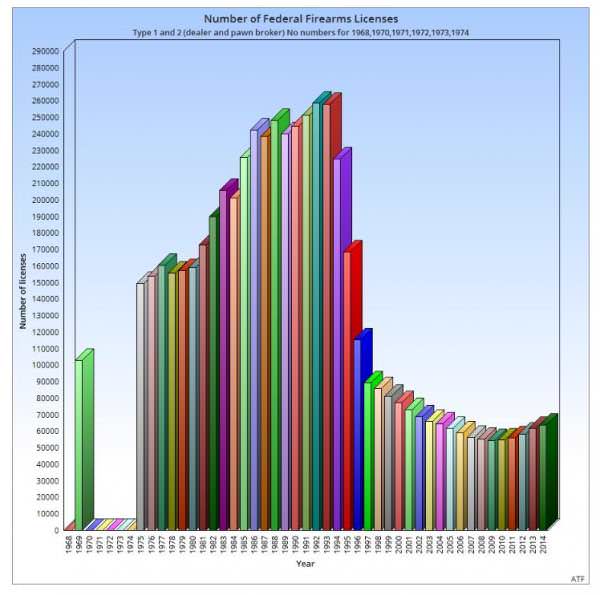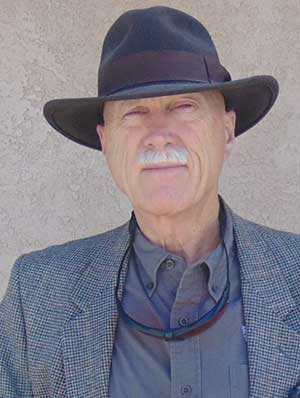By Dean Weingarten

Arizona – -(Ammoland.com)- In 1968 Congress passed the infamous Gun Control Act (GCA) of 1968. The act banned the sale of guns through the mail except to federally licensed dealers. One purpose of the act was to weaken and defund the National Rifle Association. A great deal of advertisement funding for the NRA magazine, The American Rifleman, came from ads for the mail order purchase of firearms.
The mail order sale of pistols had been regulated since 1927. GCA 1968 banned mail order sales of rifles and shotguns, guns that were used in only a small percentage of crimes, and created a whole new class of arms, “destructive devices”. Up until 1968, you could order anti-aircraft and anti-tank cannon and ammunition through the mail. Crimes committed with them were nil.
The original act was rejected by Congress in 1966, and by committees in the House and Senate in 1968. In spite of the resistance, President Johnson and rising power of the media cartel rammed the act through on the heels of the assassinations of Robert Kennedy and Martin Luther King. Even though the NRA had no lobbying arm at the time, the act was not popular in Congress. Only arm twisting by Lyndon Johnson pushed it into law. The Congress refused to give Johnson what he wanted most – national gun registration of all guns and gun owners.
If you want to eliminate guns from society, the strategy of licensing gun sellers is an old and obvious one. In 1607, the Tokugawa Shogunate issued a decree that all guns produced had to be approved of by the government. Gradually gun orders were decreased. Eventually, no new guns were produced.
Western nations pushed licensing as part of the gun control laws that swept the continent between the World Wars. The 1934 and 1938 National Firearms acts were part of that trend in the United States, as the Roosevelt regime moved to increase and consolidate power. The original fee for an FFL was $1 per year in 1938, increased to $10 in 1968. Federal Firearm Licenses were fairly easy to obtain until Bill Clinton was elected President in 1992. 1992 was the high point for FFL numbers.
As part of Clinton’s disarmist agenda, he ordered the ATF to study the number of people with FFLs. The conclusion was that they needed to reduce the number of FFLs in order to regulate them more. There was no indication that small FFLs were being abused. The ATF had shown no inclination to reduce the numbers before Clinton. President Clinton wanted to drive most FFLs out of business.
Clinton drove FFL numbers down by the simple expedient of increasing the fee from $30 for three years to $200, requiring fingerprints and photographs, requiring that FFL holders meet local zoning requirements for retail outlets, and requiring proof that they had ‘secure storage’.
Clinton’s war on gun dealers drastically decreased the numbers of FFLs. From 1992 to 2009, the number of FFLs dropped by over 200,000. The use of zoning ordinances as a means of conflating local and federal power structures means that many urban areas are severely under-served. There is only one FFL in Washington, D.C., and he does not stock guns. He only transfers them. The last gun shop in San Francisco closed recently, due to over-regulation.
President Obama claimed that he wants small time gun sellers to have FFLs. He did not suggest reducing the regulatory burden to make obtaining an FFL feasible for small sellers.
It is a cynical strategy. Require FFLs, but have the regulatory burden so high that the acquisition of the license is uneconomic and impractical.
c2014 by Dean Weingarten: Permission to share is granted when this notice is included. Link to Gun Watch
About Dean Weingarten;
Dean Weingarten has been a peace officer, a military officer, was on the University of Wisconsin Pistol Team for four years, and was first certified to teach firearms safety in 1973. He taught the Arizona concealed carry course for fifteen years until the goal of constitutional carry was attained. He has degrees in meteorology and mining engineering, and recently retired from the Department of Defense after a 30 year career in Army Research, Development, Testing, and Evaluation.
